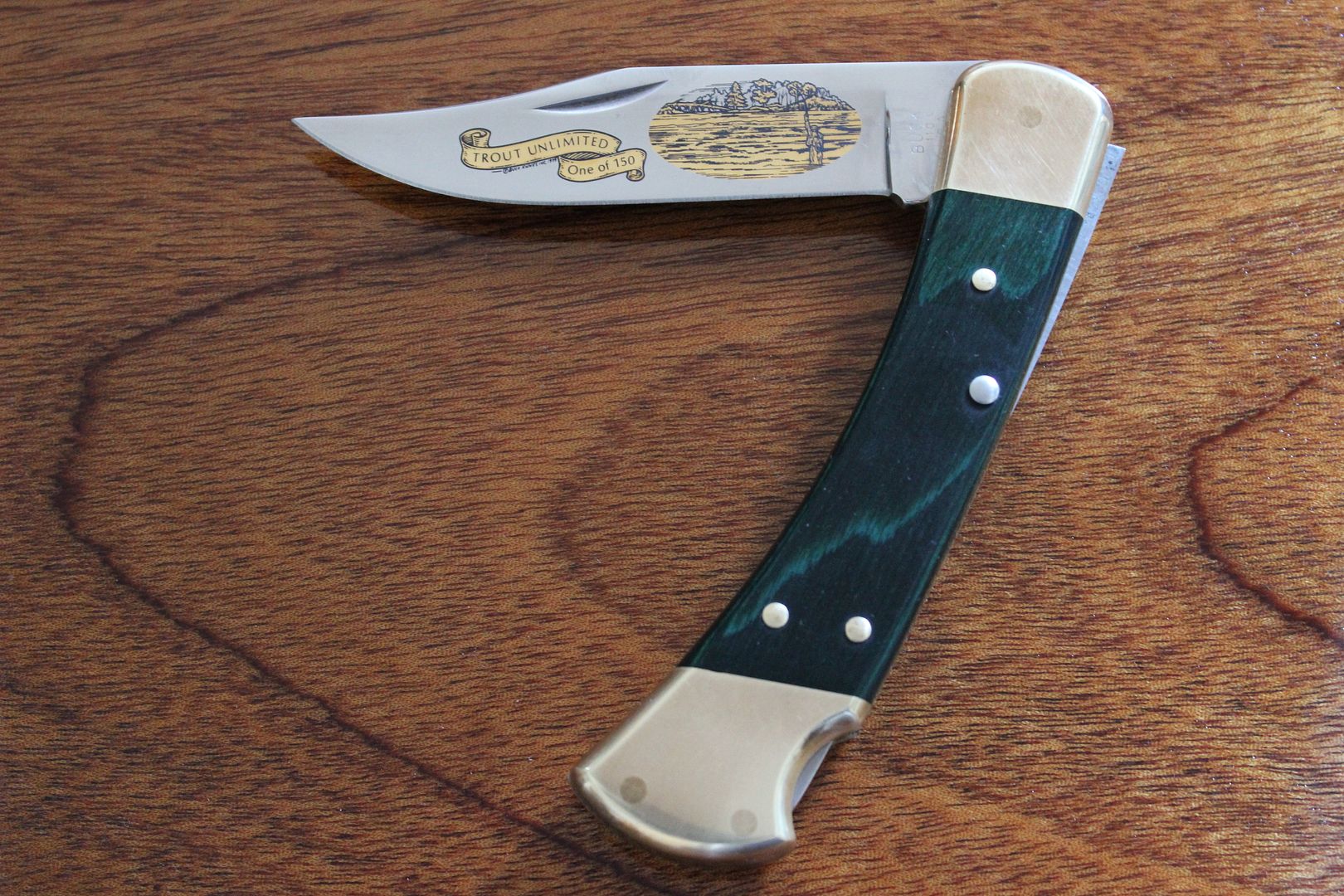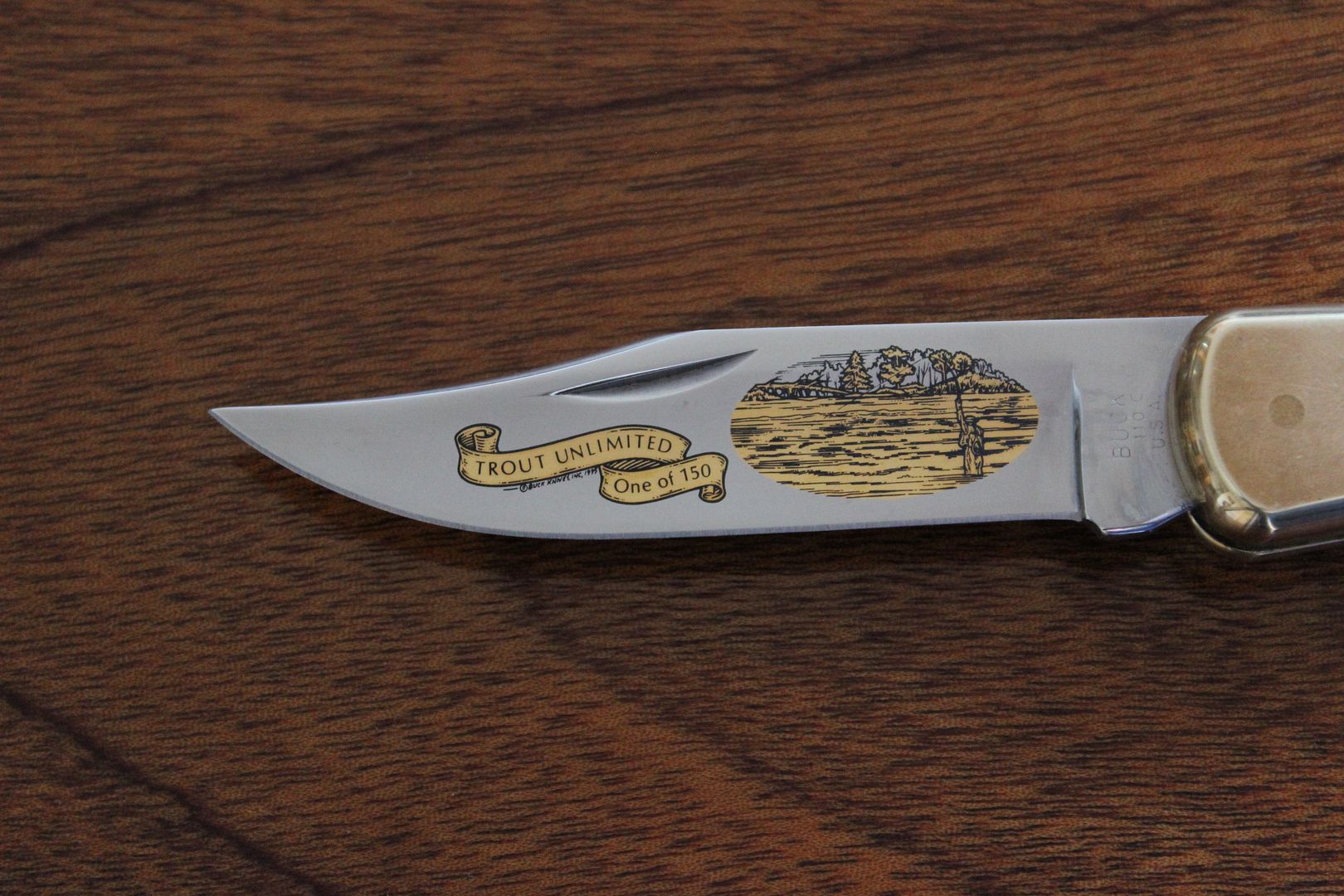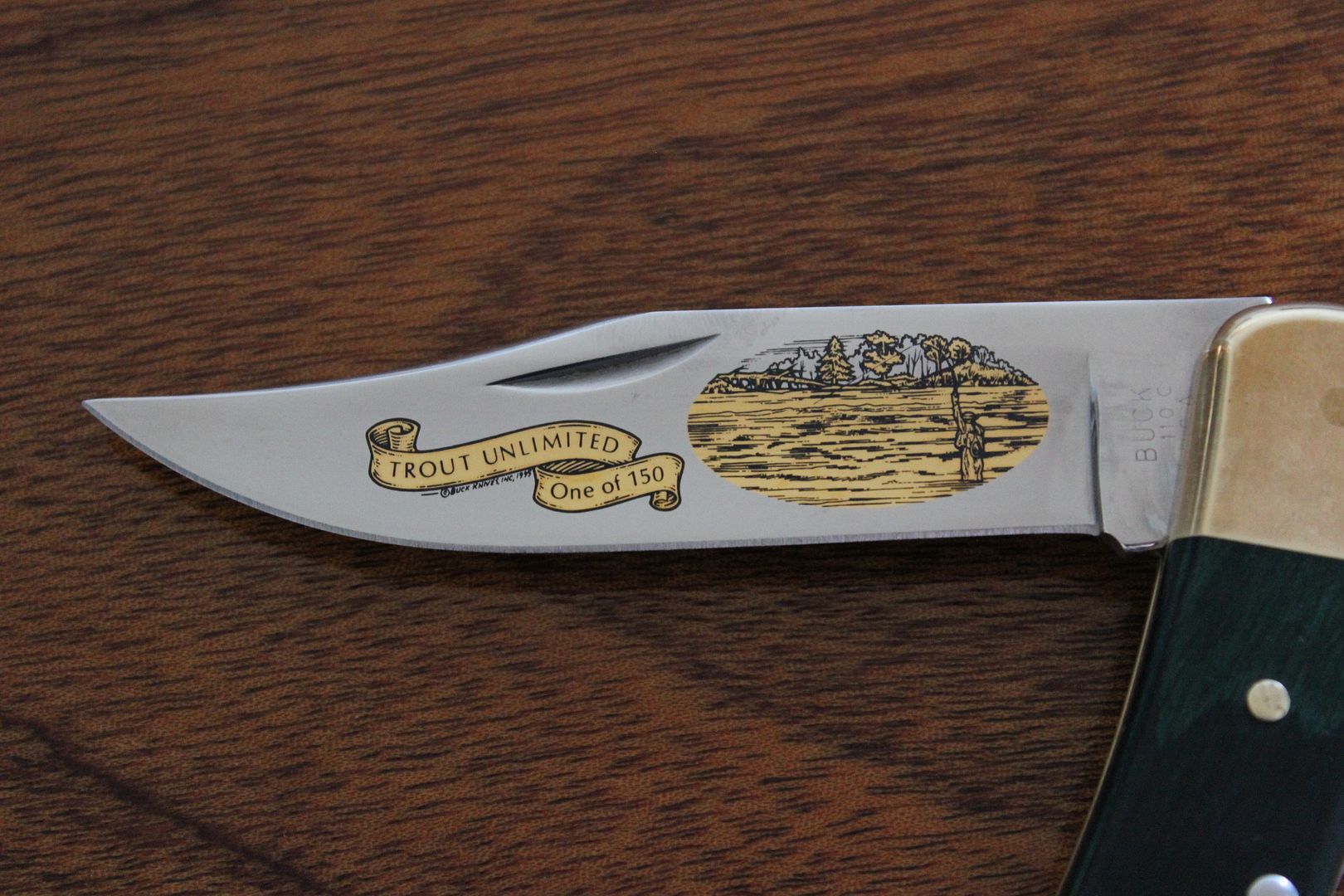DeSotoSky
Gold Member
- Joined
- Mar 21, 2011
- Messages
- 6,812
Hello and welcome to the Sunday Picture Show. Share your Buck knives with others by posting pictures of them here. New or old, plain or custom, user or safe queen, one or a collection, we love to see them all. This weekly tradition was started in 2010 by ItsTooEarly (Armand Hernandez) and Oregon (Steve Dunn). Help keep the tradition alive. Feel free to click that 'LIKE' but lets not let it replace discussing and complimenting each others knives. DeSotoSky (Roger Yost)

The French Revolution began with the storming of the Bastille on July 14, 1789. This Aurum gold etch commemorates the 200th anniversary in 1989 with an issue of 250. The inscription on the blade is in French so I assume the knife was for an export project. I remember making a paper mache model of the Bastille for a school project when I was a kid. I'm not French and cannot remember what the project was for.


Interesting Bastille Facts
* Originally constructed as a fortified gate (1370-1383) to protect Paris from the English during the 100 years war (1337-1453)
* Later turned into a fortress. Eight 100' towers linked by walls and surrounded by a 80' wide moat. Additional constructions were added in later centuries.
* Hugues Aubriot, builder of the Bastille, was the first person to be imprisoned there on trumped up charges of heresy, sodomy, and extortion for arresting citizens who had harassed the city's Jews. He fled after being released by a mob protesting excessive taxation.
*A side note about Aubriot. He was Provost (Mayor) of Paris under Charles V. He was a good administrator and in addition to the Bastille, he built the city's first sewers and strengthened the city's fortifications. He was on very poor terms with the Church and lost support after the death of Charles V in 1380 leading to his incarceration.
* At the time of the storming there were only 7 prisoners, 4 forgers, a lunatic, a man who had attempted an assassination 30 years prior, and a "deviant" young aristocrat imprisoned at the request of his family (I gotta wonder what he did). The Marquis de Sade was famously imprisoned in the Bastille but had been transferred to an asylum 12 days prior.
* The Towers of the Bastille.... each tower had a name. The Chapel Tower and the Treasury Tower were built first. Soon after, the Liberty Tower and the Bertaudière Tower were built. Then added were the Corner Tower and the Well Tower, and lastly the County Tower and the Basinière Tower.
Although they were the same height, the towers of the Bastille did not have the same number of floors. Treasury and Chapel had only two floors and no dungeons, whereas Liberty and Bertaudière had three floors and dungeons. The four corner towers, Corner, Well, County, and Basinière, had five floors of jail cells.
1 Corner Tower. Obviously, this tower received its name from its location at the corner of rue Saint-Antoine.
2 Chapel Tower. In the fifteenth century, the chapel of the Bastille was set up in this tower. It was afterwards transferred to a spot between Liberty Tower and Bertaudière Tower.
3 Treasury Tower, so named when Henry IV stored his savings here in order to create a state treasury. Outside, between Chapel and Treasury Tower, was still visible the arch that was the first gate of Saint-Antoine.
4 County Tower. The origin of the name of this tower is unknown.
5 Well Tower. The well of the Bastille had been dug at the foot of this tower.
6 Liberty Tower. The name of this tower was given in a slightly sarcastic spirit around 1380, when the Parisians demanded freedom and at the same time the provost of Paris, Hugues Aubriot, was locked up. At the floor of this tower was the interrogation room, which might or might not have ceased to be used as such when Louis XVI officially abolished torture.
7 Bertaudière Tower. This tower was named after the mason Bertaudière, who was killed falling from the platform during construction. Its third floor was used as the prison for the Man in the Iron Mask.
8 Basinière Tower. This tower was named after a prisoner that was locked up here in 1663, a Sir de la Basinière, who was Treasurer of Savings.
Last edited:























